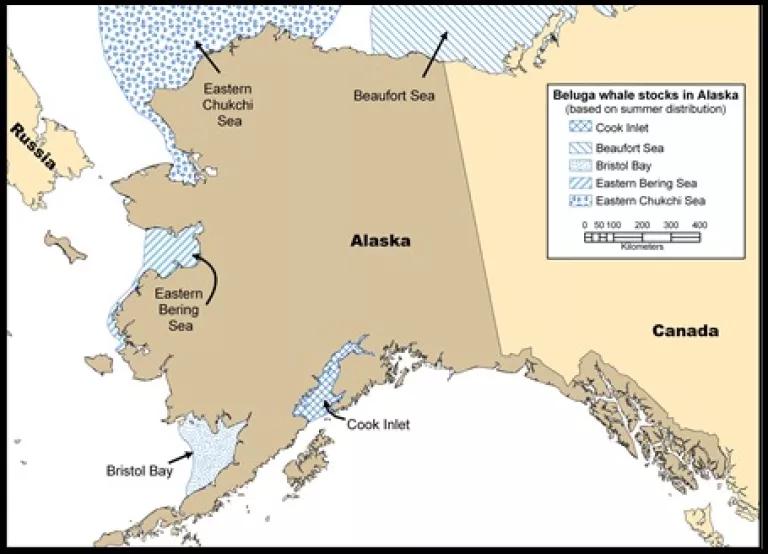
We’ve been talking a lot here at Switchboard about the Pebble mine: a monstrous open-pit copper and gold mine that would cut a wound two-miles wide and 2,000 feet deep into Alaska's wild and pristine landscape. The mine, which would be operated by the huge British conglomerate Anglo American, is opposed overwhelmingly by local residents and by Alaska's Native communities. It also threatens the natural resources of the Bristol Bay watershed, including an incredible array of wild creatures from grizzly bears, to wolverines, to caribou.
One animal equally worthy of our concern is the beluga whale, also known as the “white whale” or “sea canary,” because of its tremulous, musical calls. There are only five populations of beluga whales in Alaska, and the Pebble mine threatens two of them: the populations in Bristol Bay and Cook Inlet.

How does the mine accomplish this trick? For the Cook Inlet population, already one of the most endangered whale populations in the United States with only a few hundred individuals left, it’s development. As part of Anglo-American’s plan to get gold and copper from the mine site to market, the company has proposed the construction a massive set of infrastructure in Iniskin Bay, so that it can ship its minerals from Cook Inlet, which already hosts the Port of Anchorage to the North. In order to make this possible, Anglo-American will have to construct a marine terminal, roads, and a slurry pipeline. Iniskin Bay is one of the few places in lower Cook Inlet where beluga whales are seen and it has been identified by federal wildlife scientist as part of habitat “critical” to the whale. Needless to say, industrial development in Iniskin Bay, including increased ship traffic through the lower Inlet generally, does not bode well for belugas there.
As for the Bristol Bay belugas (a healthier population of about 1,600), Pebble mine threatens one of Bristol Bay’s most important resources, its salmon, including the largest sockeye salmon run in the world. Belugas in Bristol Bay rely on these salmon for food, particularly in the spring, when young fish migrate out into the open ocean. Plopping a huge open-pit mine, along with 10 million billion tons of toxic mine tailings, wastewater, and the construction of massive earthen damns in the headwaters of the Bay, near where salmon go to spawn is, to put it mildly, not a good thing. Indeed, concern over the impacts to salmon runs has driven much of the opposition to the mine by local residents.
Simply put, endangered beluga whales in Cook Inlet can’t take another major industrial development in their essential habitat; and beluga whales in Bristol Bay, just like its fishing communities, need the salmon runs that the mine threatens. Forty percent of Alaska’s beluga whale populations could be imperiled by the Pebble mine. Anglo-American’s stockholders will be meeting on Earth Day. Sign NRDC’s petition and let them know that beluga whales and all the people and wildlife in Bristol Bay can’t afford this mine.
